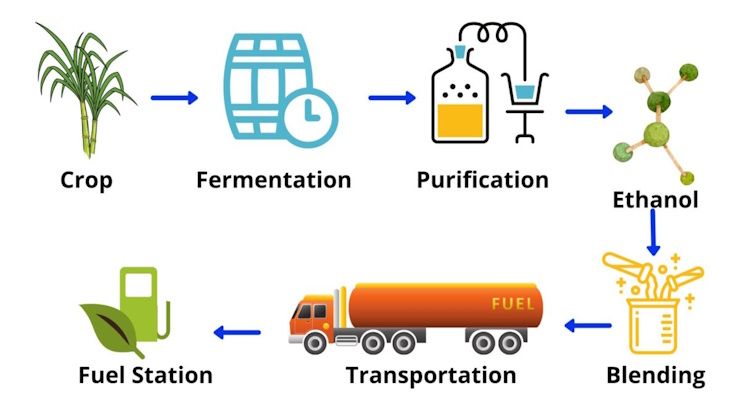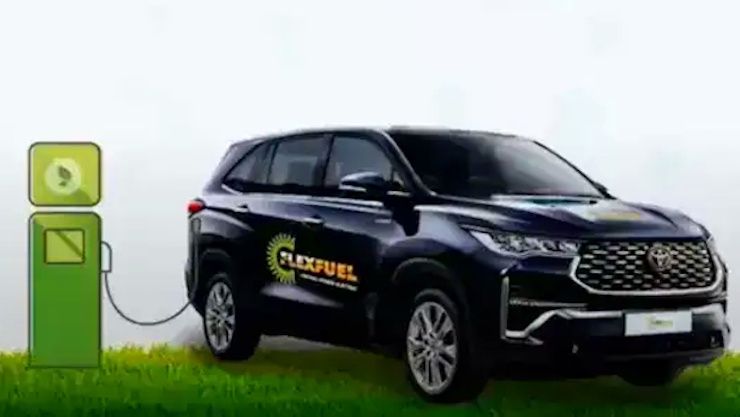Your Petrol Will Have 30 % Ethanol: Govt Sets Higher Ethanol Blending Target



If you own a petrol-powered bike or car in India, the fuel you use is about to undergo a significant transformation. The government has raised the bar on ethanol blending, setting a new target: by 2030, petrol sold across the country will contain up to 30% ethanol. That’s a big shift from the fuel you're used to—and one that could affect everything from your daily commute to how you maintain your vehicle.
This move marks a continuation of India’s aggressive push towards cleaner fuels and reduced dependence on imported oil. Interestingly, the original plan was to reach 20% ethanol blending by 2030—but that target has already been achieved, five years ahead of schedule. As of April 2025, all petrol pumps in India are dispensing E20 fuel, which contains 20% ethanol. Now, with the target reset to E30, things are going to change even more.

Ethanol is a renewable biofuel, usually produced from crops like sugarcane, maize, and surplus grains. When blended with petrol, it helps reduce India's reliance on imported crude oil—something that costs the country billions of dollars every year. According to government estimates, ethanol blending has already helped India save over ₹1.2 lakh crore in foreign exchange in the past decade.
But this shift isn't just about economics. Ethanol burns cleaner than petrol, emitting fewer greenhouse gases. This helps India inch closer to its environmental goals while also improving urban air quality. And for farmers, the ethanol push opens up new revenue streams. By creating demand for crops like sugarcane and maize, the blending programme offers some insulation against price volatility in traditional agricultural markets.

While E20 fuel is already compatible with most new petrol vehicles sold today, moving to E30 introduces new variables. Ethanol has lower energy density than petrol, which means fuel efficiency may drop slightly. There may also be a marginal reduction in performance, particularly in engines not specifically tuned for higher ethanol blends.
Newer vehicles—especially those with electronic fuel injection and advanced engine management systems—may be able to adapt. But older petrol cars and two-wheelers, especially those built before 2020, might face issues. Ethanol attracts moisture, which can lead to rust in metal tanks and fuel lines, and its corrosive properties can degrade rubber, plastic, and other fuel system components over time.
Owners of older vehicles or vintage models will need to be more vigilant. Fuel system maintenance may become a regular chore, and in some cases, upgrades might be necessary—like changing to ethanol-resistant hoses or replacing rubber parts that are vulnerable to ethanol’s effects.
The government is currently evaluating how best to implement the shift to E30 petrol. A phased rollout—starting with metros and gradually reaching smaller cities and rural areas—is one possible approach. This would give manufacturers time to develop and release compatible models and allow consumers to transition gradually.
Alternatively, the government could opt for a single nationwide switch, standardising E30 petrol across all pumps in one go. Regardless of the rollout method, the shift is inevitable—and it’s likely to be one of the most significant changes to India’s fuel ecosystem in decades.
Manufacturers are expected to respond with models that can handle E30 fuel, or even flex-fuel vehicles that can run on varying ethanol-petrol mixes. For DIY-minded users, aftermarket upgrades like fuel-line replacements and corrosion-resistant fuel tank coatings could become more popular in the coming years.
The push towards E30 Petrol is about more than just what goes into your tank. It’s part of a broader shift towards sustainability and energy independence. As urban pollution worsens and fuel import bills balloon, ethanol blending presents a locally sourced, cleaner-burning alternative.
That said, the transition isn’t without complications. Ethanol production consumes land and water, raising concerns about whether food crops may be displaced by fuel crops. To address this, the government is exploring second-generation biofuels—those made from agricultural waste and non-edible biomass. For now, though, the focus remains on ramping up ethanol availability and building a robust supply chain.
If you're planning to buy a new bike or car, it’s worth checking with the manufacturer about E30 petrol compatibility. Many newer vehicles will likely be engineered to handle it, but confirmation never hurts. For those driving older vehicles, regular maintenance is key—keep an eye on fuel lines, rubber parts, and tanks for early signs of wear and tear.
You may also want to stay informed about fuel additives or treatments that help prevent corrosion in ethanol-blended fuels. As the transition to E30 gathers pace, manufacturers and service providers will likely roll out specific recommendations and solutions.
By 2030, your petrol will be greener—and slightly different. The familiar smell at the fuel station will carry a new meaning, symbolising India’s evolving approach to energy, mobility, and sustainability. For consumers, this is both a challenge and an opportunity. The shift to E30 may require adjustments in maintenance and performance expectations, but it also marks a move towards a cleaner, more self-reliant future.
The fuel in your tank is changing—and with it, the road ahead.